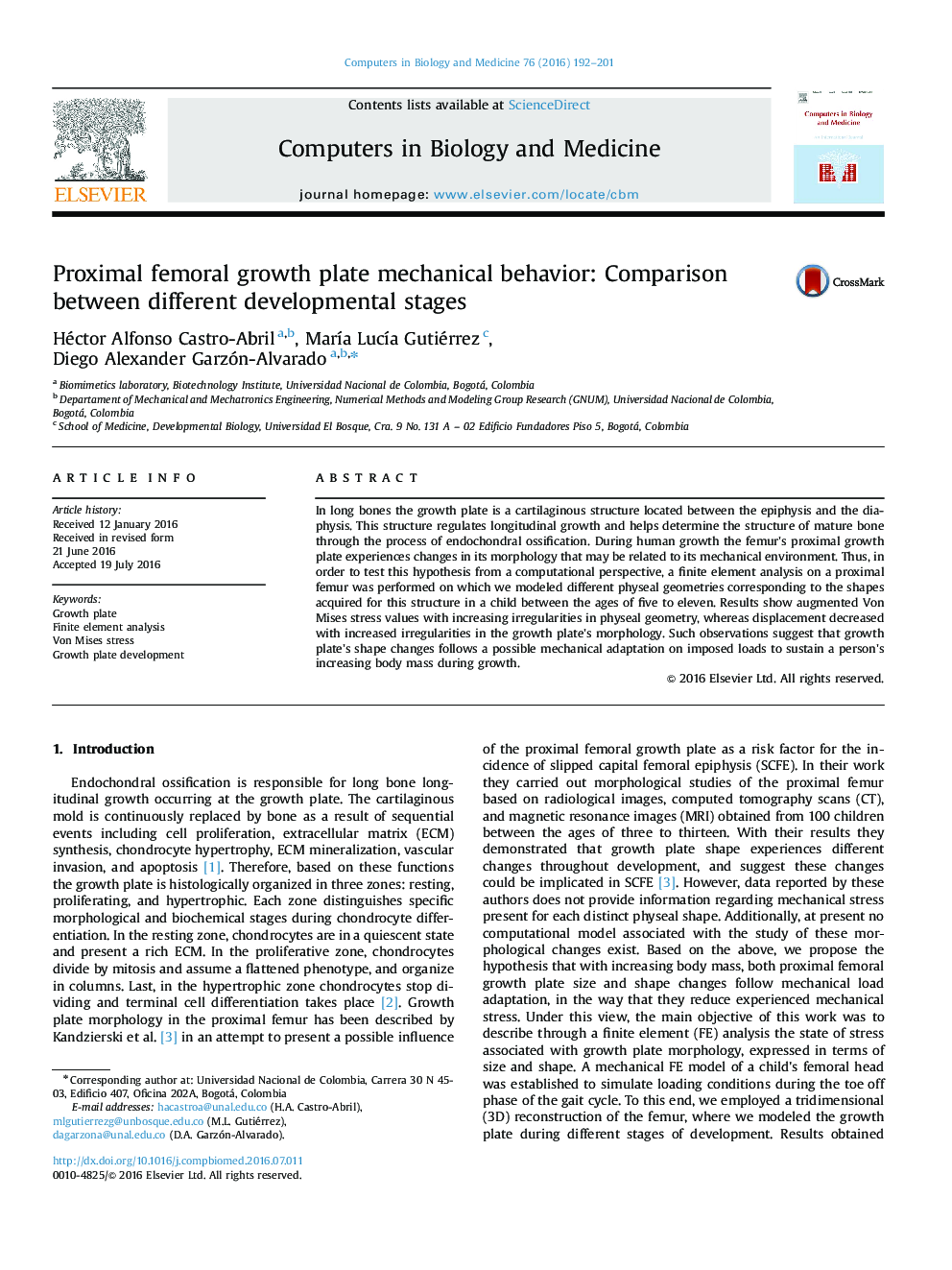| Article ID | Journal | Published Year | Pages | File Type |
|---|---|---|---|---|
| 504779 | Computers in Biology and Medicine | 2016 | 10 Pages |
•Growth plate stress depends on growth plate shape.•Growth plate stress tends to decrease in concave growth plate shapes, corresponding to late stages in puberty.•Relative displacement increases in concave growth plate shapes.•Mechanical environment drives changes in growth plate shape.
In long bones the growth plate is a cartilaginous structure located between the epiphysis and the diaphysis. This structure regulates longitudinal growth and helps determine the structure of mature bone through the process of endochondral ossification. During human growth the femur's proximal growth plate experiences changes in its morphology that may be related to its mechanical environment. Thus, in order to test this hypothesis from a computational perspective, a finite element analysis on a proximal femur was performed on which we modeled different physeal geometries corresponding to the shapes acquired for this structure in a child between the ages of five to eleven. Results show augmented Von Mises stress values with increasing irregularities in physeal geometry, whereas displacement decreased with increased irregularities in the growth plate's morphology. Such observations suggest that growth plate's shape changes follows a possible mechanical adaptation on imposed loads to sustain a person's increasing body mass during growth.
